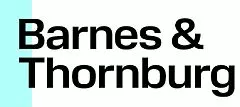- within Privacy, Insurance and Intellectual Property topic(s)
- with readers working within the Insurance and Utilities industries
This month, the Federal Communications Commission (FCC) finally released Connecting America: The National Broadband Plan (download a PDF of the plan by clicking here). This Plan was required by the American Recovery and Reinvestment Act and provides a "21st century roadmap" of goals and actions necessary to "harness the power of broadband." The Plan emphasizes the importance of infrastructure access, including access to utility poles, to the deployment of broadband facilities.
The Plan recommends uniform rental rates for pole attachments that are as low as possible. The Plan states that "[a]pplying different rates based on whether the attacher is classified as a 'cable' or 'telecommunications' company distorts attachers' deployment decisions." Plan at 110. The Plan supports use of the formula currently used to establish rates for cable television service providers.
The Plan's recommendations concerning the "make-ready work" process and its costs are as follows:
- Establish a schedule of charges for the most common categories of work.
- Codify the requirement that gives attachers the right to use space and cost-saving techniques such as boxing or extension arms where practical and in a way that is consistent with the pole owners' use of those techniques.
- Allow prospective attachers to use independent, utility-approved and certified contractors to perform all engineering assessments and communications make-ready work, as well as independent surveys, under the joint direction and supervision of the pole owner and the new attacher.
- Ensure that existing attachers take action within a specified period (such as 30 days) to accommodate a new attacher.
- Align the payment schedule for make-ready work to the actual performance of that work, rather than requiring all payment up front.
Plan at 111. The Plan notes that there are no federal regulations that address the duration of the entire process for obtaining access to poles, ducts, conduits and rights-of-way. The Plan recommends the FCC establish a comprehensive timeline for each step of the Section 224 access process and improve the process for dispute resolution. Plan at 111.
The Plan states that the FCC "should ensure that information about utility poles and conduits is up-to-date, readily accessible and secure and that the costs and responsibility of collecting and maintaining data are shared equitably by owners and users of these vital resources." Plan at 112.
The Plan notes that the statutory change may be necessary to harmonize access policy for all poles, ducts, conduits and rights-of-way. Among other things, the Plan suggests that the exemptions currently written into Section 224 for poles owned by municipalities, cooperatives and utilities in states that regulate pole attachments, should be eliminated so that minimum standards can be established throughout the nation. Plan at 112.
The Plan recommends that the FCC establish a joint task force with state, Tribal and local policy makers to develop guidelines for rates, terms and conditions for access to public rights-of-way. Plan at 113.
The above recommendations have not been formally adopted but are expected to be the subject of new or revived FCC proceedings.
The content of this article is intended to provide a general guide to the subject matter. Specialist advice should be sought about your specific circumstances.


